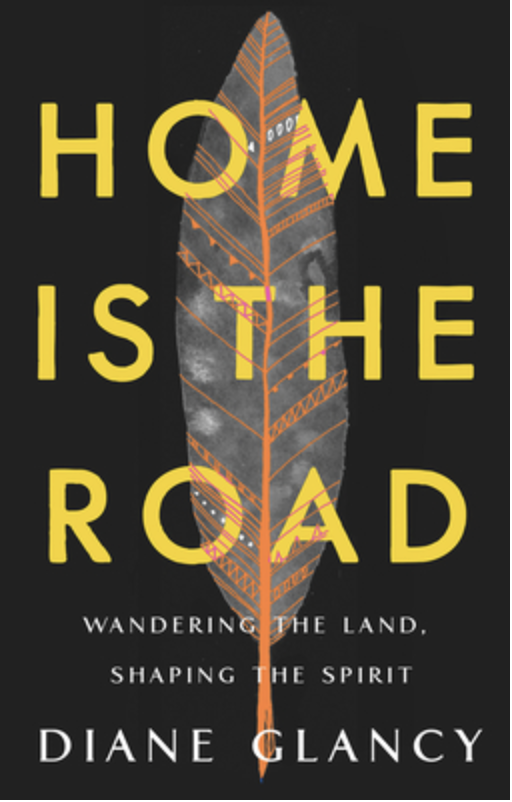
Home Is the Road by Diane Glancy
When you think of someone taking a road trip you do not imagine a women her late seventies, driving alone across the Midwest and West. That is the framework Diane Glancy uses for her book Home Is the Road. She feels at home on the road, has since her childhood, when her first car trip was to her grandparent’s farm. She drives from her home in Kansas to her son in Texas to her teaching position in California by way of New Mexico. She keeps to her mobile cocoon except to stop for gasoline and food. She sleeps in her car at rest stops, among the long-haul truckers, arriving after dark so it is not noticeable she is alone. She sleeps in her car, lowering the backseats for a bed, bundled in a sleeping bag, using a pillow propped on a suitcase. This mode of travel is comfortable to her, for in her travels she hears the voices that inspire her work.
Glancy relates how storytelling was an oral form, passed from generation to generation until the written word became commonplace. She believes voices with stories have been silenced by this change, especially those of the Native Americans who were forced off their land by the advancing Europeans.
Her concern for the Native Americans and their stories come from her Cherokee father. She tells of the legend of the horse’s creation from a dream. The people were looking for a way to carry water while following the buffalo, their source of sustenance. The used clay near the river, breathing life into the horse’s nostrils and so were able to follow the buffalo and continue their lives.
Glancy’s descriptions are compelling. She compares the boxcars on a freight train to the herds of buffalo that migrate seeking water. She sees the cold as a snow leopard sitting on a mountain with eyes of fire and teeth of ice. Of the passage of time she writes, “My past is like clothes that don’t fit.”
In addition to her Cherokee background, Glancy has deeply held Christian beliefs. One of the more unusual aspects of the book is how she integrates Bible verses into her narrative. I am no biblical scholar and some quotations I have never seen before, but they are exactly right in the context of the paragraphs, reinforcing the images she presents.
Go thee therefore into the highways. Matthew 22:9
Prefaces the chapter about her trip from Kansas to Banff for a writing program. She calls the page her landscape and the paragraphs her shelter, until she starts driving. Glancy says while driving she comes into a vortex of nothingness and the voices of the world speak to her.
Her poems are interspersed with her prose. So are three frames from her camera, showing the shadow of her car as she moves along I-35 in Kansas. They are partnered with one of her poems about the road. If I understood her words correctly, Glancy run a video camera while she drives.
Each section of the book presents surprises. It is a complex book with many thoughts to contemplate. But it is not a difficult read. The prose flows evenly. The biblical verses and stories from Native Americans fit seamlessly into the narrative. You may find yourself rereading paragraphs or returning to sections. That is the mark of a good book – it stays with you long after you have closed the cover for the final time. Home Is the Road will not disappear from my memory any time soon.
Book Review by Patricia D’innocenzo





